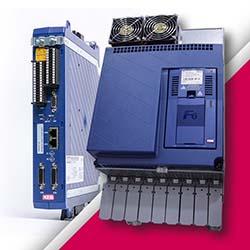Sumitomo Corporation Announces Joint Development of Prototype Casting Business Using 3D Printing Technology in the United States
In the automobile, construction machinery and industrial equipment fields, sand casting1 is widely adopted for the manufacture of components.
Sumitomo Corporation (Head Office: Chiyoda-ku, Tokyo; Representative Director, President and Chief Executive Officer: Masayuki Hyodo) and Kimura Foundry Co., Ltd. (Headquarters/Shimizu-cho Plant: Sunto-gun, Shizuoka Prefecture; President: Kazutoshi Kimura; hereinafter, "Kimura Foundry") have concluded an agreement, under which Sumitomo Corporation will invest in Kimura Foundry America, Inc. ("KFA") to hold a 35 percent interest in this U.S. subsidiary of Kimura Foundry, which engages in the manufacture of prototype casting using 3D printing technology.
In the automobile, construction machinery and industrial equipment fields, sand casting1 is widely adopted for the manufacture of components. In this sand casting method, a pattern of the object to be cast is created by cutting wood, plastic or other materials. Then a sand mold is made by transferring a profile of a pattern to the compacted sand, and finally, molten metal is poured into the mold to be cast into a component. For automotive engine prototype parts having very complex shapes and the service parts of old models, which are difficult to manufacture due to worn pattern, it could take from several weeks to several months to make the patterns for them.
Kimura Foundry introduced the 3D printing equipment of sand molds2 which eliminates the need to make patterns from sand casting process. Based on the 3D data input into the printer, an objective area on the thin sand layer is bound by resin or other agent, and multiple bound layers are laminated one on another to directly form a sand mold. With this method, a sand mold can be completed in one day, substantially reducing the lead time required for the delivery of a casting. Moreover, numerous sand molds can be formed in one single process. Kimura Foundry has also developed technology to suppress the expansion of the sand even when an iron/steel-based material with a melting temperature exceeding 1400 degrees Celsius is poured into the mold, thereby preventing the shape of the casting from being deformed.
Sumitomo Corporation has long been engaged in the overseas sales of castings made by Kimura Foundry. Through investment in KFA, Sumitomo Corporation is aiming to generate synergy effects between the business and the Sumitomo Corporation Group's business such as auto parts manufacturing, while making effective use of its overseas customer network to expand the prototype casting business across the fields of construction and agricultural machinery, industrial equipment, and others.
Sumitomo Corporation and Kimura Foundry will push ahead with the expansion of the business in Europe and Asia in addition to the United States, hoping eventually to support the development of related industries around the world.
Note 1: Sand casting is a casting process in which molten metal is poured into a sand mold and formed into a casting.
Note 2: In 3D printing of a sand mold, an objective area on the thin sand layer is bound by resin, etc. and multiple bound. layers are laminated one on another to directly form a three-dimensional sand mold based on the 3D data input into the printer. In this process, unlike metal 3D printing, which directly produces component, after the sand mold is created, a casting is made by the conventional method by using 3D printed mold, Therefore, prototypes and service parts can be manufactured with equivalent quality and functionality to those manufactured by mass-production process.
Featured Product

